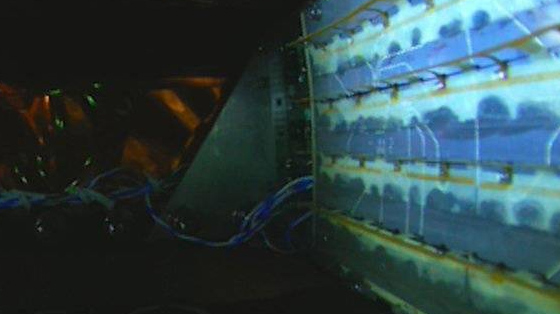New Research Reveals Breakthroughs in Compact Wireless Transmission Technologies
Introduction
In an increasingly connected world, wireless transmission technologies have become the lifeblood of communication, powering everything from our smartphones and wearables to complex industrial and Internet of Things (IoT) systems. The demand for more compact, efficient, and high - performance wireless transmission solutions has never been greater. Recent research efforts have yielded several significant breakthroughs that are set to revolutionize the landscape of wireless communication, enabling smaller form factors, longer ranges, and higher data transfer rates. This article delves into the latest research advancements in compact wireless transmission technologies, exploring their underlying principles, applications, and the potential impact they may have on various industries.
The Basics of Wireless Transmission
Before delving into the research breakthroughs, it's essential to understand the fundamental principles of wireless transmission. Wireless communication relies on the transmission of electromagnetic waves through the air or other media. These waves can carry information in the form of modulated signals, such as amplitude - modulated (AM), frequency - modulated (FM), or phase - modulated (PM) signals. The most common frequency bands used for wireless communication include the radio frequency (RF) band, which ranges from 3 kHz to 300 GHz, and the microwave band, which spans from 300 MHz to 300 GHz.
RF and Microwave Signals
RF signals are used for a wide range of applications, including AM and FM radio, television broadcasting, and mobile communication. In mobile phones, for example, RF signals are used to transmit voice and data between the device and the cellular network. Microwave signals, on the other hand, are commonly used for satellite communication, Wi - Fi, and Bluetooth. Wi - Fi operates in the 2.4 GHz and 5 GHz frequency bands, while Bluetooth typically uses the 2.4 GHz band. These frequency bands offer a good balance between signal propagation characteristics, interference resistance, and the ability to support high - data - rate communication.

Antennas play a crucial role in wireless transmission as they are responsible for transmitting and receiving electromagnetic waves. The design of an antenna is optimized to match the frequency band and application requirements. In compact wireless devices, such as smartphones and wearables, miniaturized antennas are required to fit within the limited space available. These antennas are often designed using techniques such as planar inverted - F antennas (PIFAs) and monopole antennas. PIFAs are widely used in mobile phones due to their compact size and good performance. They consist of a planar conductor that is folded into an F - shape and connected to a ground plane. Monopole antennas, on the other hand, are simple and easy to design, making them suitable for a variety of applications.
Research Breakthroughs in Compact Wireless Transmission Technologies
Millimeter - Wave (mmWave) Technology
One of the most significant research breakthroughs in recent years has been the development and adoption of millimeter - wave technology. Millimeter - waves occupy the frequency range from 30 GHz to 300 GHz, offering several advantages over traditional RF and microwave frequencies. Due to their shorter wavelength, mmWave signals can be focused more precisely, allowing for the use of smaller and more compact antennas. This has led to the development of highly integrated mmWave transceivers that can be easily incorporated into small - form - factor devices.
Higher Data Rates
One of the primary benefits of mmWave technology is its ability to support extremely high data rates. With the increasing demand for high - definition video streaming, virtual reality (VR), and augmented reality (AR) applications, traditional wireless technologies are struggling to keep up. mmWave frequencies offer a much larger bandwidth compared to lower - frequency bands, enabling data transfer rates of up to several gigabits per second. For example, the fifth - generation (5G) cellular networks are leveraging mmWave technology to provide ultra - high - speed connectivity in urban areas. In a 5G mmWave deployment, a single user can potentially achieve data rates of over 10 Gbps, which is significantly faster than the speeds offered by 4G LTE networks.
Increased Capacity
mmWave technology also offers increased capacity, allowing for more devices to be connected simultaneously. The large number of available frequency channels in the mmWave band enables network operators to allocate more resources to individual users, reducing interference and improving overall network performance. This is particularly important in densely populated areas, where the number of connected devices is rapidly increasing. In addition, mmWave technology can be used in combination with other wireless technologies, such as Wi - Fi, to create a seamless and high - capacity wireless ecosystem.
Challenges and Solutions
Despite its many advantages, mmWave technology also faces several challenges. One of the main challenges is signal attenuation. mmWave signals are more easily absorbed and scattered by obstacles, such as buildings, foliage, and even rain. This can limit the range and coverage of mmWave networks. To overcome this challenge, researchers are developing advanced techniques such as beamforming. Beamforming involves using an array of antennas to direct the mmWave signal towards the intended receiver, effectively increasing the signal strength and range. Another challenge is the high cost of mmWave components. However, as the technology matures and economies of scale come into play, the cost of mmWave transceivers and antennas is expected to decrease significantly.
Terahertz (THz) Communication
Terahertz communication is another area of research that holds great promise for the future of compact wireless transmission. The terahertz frequency range, which spans from 0.1 THz to 10 THz, lies between the microwave and infrared regions of the electromagnetic spectrum. Terahertz waves offer several unique properties that make them attractive for wireless communication applications.
Ultra - High - Speed Data Transfer
Similar to mmWave technology, terahertz waves have the potential to support extremely high data transfer rates. The large bandwidth available in the terahertz band can enable data rates of up to several terabits per second. This makes terahertz communication suitable for applications that require the transfer of large amounts of data in real - time, such as high - definition video streaming, data center interconnects, and wireless backhaul for 5G and future cellular networks. In addition, terahertz waves can penetrate certain materials, such as plastics and paper, which could be useful for applications such as non - invasive imaging and security screening.
Short - Range Communication
Terahertz communication is particularly well - suited for short - range applications. Due to the high attenuation of terahertz waves in the atmosphere, their range is limited to a few meters. However, this short - range characteristic can be an advantage in certain scenarios, such as in - room communication or communication between closely spaced devices. For example, terahertz technology could be used to create high - speed wireless connections between devices within a smart home or office environment. In addition, the short - range nature of terahertz communication can help to reduce interference with other wireless systems operating in the same area.
Research Challenges
The development of terahertz communication technology is still in its early stages, and several research challenges need to be overcome. One of the main challenges is the lack of efficient terahertz sources and detectors. Currently, terahertz sources are relatively large, expensive, and consume a significant amount of power. Researchers are working on developing new materials and device structures to create more compact, efficient, and low - power terahertz sources and detectors. Another challenge is the development of suitable modulation and coding techniques for terahertz communication. Due to the unique properties of terahertz waves, traditional modulation and coding schemes may not be optimal, and new techniques need to be developed to ensure reliable and high - speed data transmission.
Wireless Power Transfer (WPT)
Wireless power transfer is a technology that allows electrical energy to be transferred from a power source to a load without the need for physical wires. This technology has the potential to revolutionize the way we power our electronic devices, eliminating the need for cumbersome charging cables and allowing for more convenient and flexible charging solutions. Recent research has focused on developing compact and efficient wireless power transfer systems.
Inductive and Resonant WPT
The two most common types of wireless power transfer are inductive and resonant wireless power transfer. Inductive wireless power transfer works on the principle of electromagnetic induction. A primary coil, connected to a power source, generates a magnetic field. When a secondary coil, connected to the load, is placed within the magnetic field of the primary coil, an electric current is induced in the secondary coil, which can then be used to power the load. Inductive wireless power transfer is widely used in applications such as wireless charging pads for smartphones and electric toothbrushes. Resonant wireless power transfer, on the other hand, uses resonant circuits to transfer power over longer distances. By tuning the primary and secondary coils to the same resonant frequency, the efficiency of power transfer can be significantly increased. Resonant wireless power transfer is suitable for applications where the distance between the power source and the load is relatively large, such as wireless charging of electric vehicles.
Advancements in WPT Technology
Researchers are constantly working on improving the efficiency and range of wireless power transfer systems. One area of research is the development of multi - coil and multi - mode wireless power transfer systems. These systems can adapt to different distances and orientations between the power source and the load, ensuring efficient power transfer in a variety of scenarios. Another area of research is the integration of wireless power transfer technology with other wireless communication technologies. For example, some researchers are exploring the possibility of using the same antennas for both wireless communication and power transfer, which could lead to more compact and efficient devices. In addition, there is a growing interest in developing wireless power transfer systems that can operate in a multi - device environment, allowing for the simultaneous charging of multiple devices.
Cognitive Radio and Dynamic Spectrum Access
Cognitive radio is a technology that allows wireless devices to adapt to the changing radio environment by sensing the available spectrum and adjusting their transmission parameters accordingly. This technology has the potential to improve the efficiency of wireless communication by enabling more dynamic and flexible use of the radio spectrum. In recent years, there has been significant research in the area of cognitive radio and dynamic spectrum access.
Spectrum Sensing and Management
The key component of cognitive radio is spectrum sensing, which involves detecting the presence of other wireless signals in the surrounding environment. There are several techniques for spectrum sensing, including energy detection, matched filter detection, and cyclostationary feature detection. Once the available spectrum has been identified, cognitive radio devices can then use dynamic spectrum access techniques to allocate and utilize the spectrum resources. This can involve techniques such as opportunistic spectrum access, where the cognitive radio device uses the spectrum when it is not being used by primary users, and spectrum sharing, where multiple devices share the same spectrum resources in a coordinated manner.
Benefits and Applications
Cognitive radio and dynamic spectrum access offer several benefits. By allowing for more efficient use of the radio spectrum, these technologies can help to alleviate the problem of spectrum scarcity, which is becoming increasingly acute as the number of wireless devices continues to grow. In addition, cognitive radio can improve the performance of wireless networks by reducing interference and increasing the reliability of communication. Cognitive radio has a wide range of applications, including in military communication, where it can be used to improve the security and flexibility of communication systems, and in rural and remote areas, where it can be used to provide wireless broadband access.
Applications of Compact Wireless Transmission Technologies
Smartphones and Wearables
The advancements in compact wireless transmission technologies have had a profound impact on the smartphone and wearable device market. With the integration of mmWave and Wi - Fi 6E (which operates in the 6 GHz band) technologies, smartphones are now able to offer faster data speeds, better connectivity, and improved user experiences. Wearable devices, such as smartwatches and fitness trackers, are also benefiting from these advancements. Wireless power transfer technology is enabling more convenient charging options for wearables, while compact antennas and transceivers are allowing for smaller and more lightweight device designs.
Internet of Things (IoT)
The IoT is a network of interconnected devices that communicate with each other and with the cloud. Compact wireless transmission technologies are essential for the growth and success of the IoT. mmWave and terahertz technologies can provide the high - speed and low - latency communication required for applications such as industrial automation, smart cities, and autonomous vehicles. Wireless power transfer can be used to power IoT devices, eliminating the need for batteries or wired connections. In addition, cognitive radio and dynamic spectrum access can help to ensure reliable and efficient communication in the IoT environment, where there may be a large number of devices operating in a limited spectrum.
Healthcare
In the healthcare industry, compact wireless transmission technologies are enabling new and innovative applications. For example, wireless sensors can be used to monitor patients' vital signs, such as heart rate, blood pressure, and glucose levels, in real - time. These sensors can transmit data wirelessly to a healthcare provider, allowing for early detection of potential health problems. Wireless power transfer can be used to power implantable medical devices, such as pacemakers and cochlear implants, eliminating the need for invasive battery replacements. In addition, mmWave and terahertz imaging technologies are being explored for non - invasive medical imaging applications.
Automotive
The automotive industry is also embracing compact wireless transmission technologies. In - vehicle communication systems, such as vehicle - to - everything (V2X) communication, rely on wireless technologies to enable communication between vehicles, infrastructure, and other road users. mmWave radar technology is being used for advanced driver assistance systems (ADAS), such as collision avoidance and adaptive cruise control. Wireless power transfer is being developed for electric vehicle charging, offering a more convenient and efficient alternative to traditional wired charging methods.
Future Outlook
The research breakthroughs in compact wireless transmission technologies are set to continue in the coming years. As the demand for more connected and intelligent devices grows, there will be an increasing need for faster, more efficient, and more reliable wireless communication solutions. The development of new materials, device structures, and communication protocols will play a crucial role in driving the next generation of wireless technologies. In addition, the integration of wireless transmission technologies with other emerging technologies, such as artificial intelligence and blockchain, has the potential to create new and innovative applications. However, there are also challenges that need to be addressed, such as the need for regulatory frameworks to support the use of new frequency bands and the development of secure and reliable wireless communication systems. Overall, the future of compact wireless transmission technologies looks bright, and these advancements are likely to have a significant impact on various industries and our daily lives.





